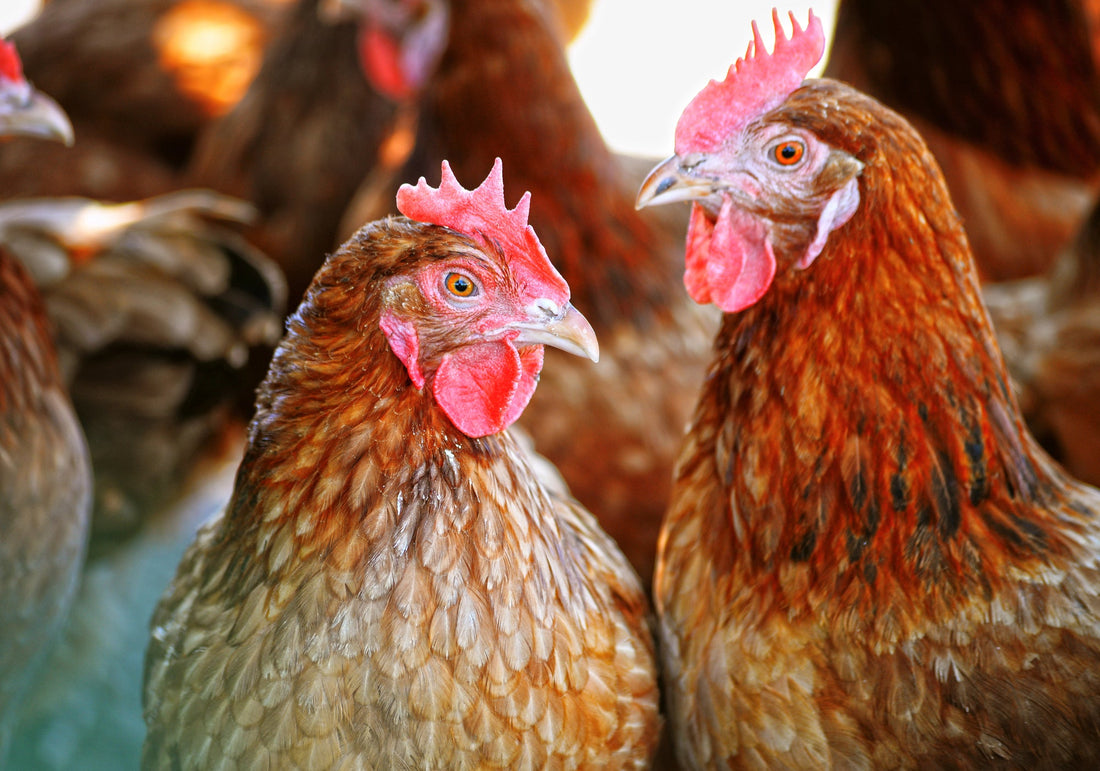Chickens, often underestimated for their social complexity, exhibit a fascinating array of behaviors that underscore their hierarchical structures and intricate relationships within flocks. Understanding these dynamics sheds light on their social skills, friendships, and the establishment of social order. In this article, we delve into the world of chicken socialization, from pecking orders to nurturing bonds, revealing the intricate web of interactions that define their communal lives.
Pecking Order: Establishing Social Hierarchy
One of the most well-known aspects of chicken social behavior is the pecking order, a hierarchical system where each chicken knows its place within the flock. The pecking order determines access to resources such as food, water, and preferred roosting spots. Dominance is established through subtle cues like pecking, posturing, and vocalizations, with higher-ranking chickens asserting their authority over lower-ranking ones.
Understanding the pecking order is crucial for maintaining harmony within the flock. Chickens instinctively establish and maintain this hierarchy to minimize conflict and ensure efficient resource distribution. As newcomers are introduced or chickens mature, the pecking order may shift, requiring chickens to reaffirm their positions through displays of dominance or submission. This social structure not only governs day-to-day interactions but also plays a role in reproductive success and overall flock cohesion.
Social Interactions: Communication and Signals
Chickens communicate through a complex system of vocalizations, body language, and behaviors that convey their intentions and status within the flock. Vocalizations range from contented clucks to warning calls, signaling danger or distress. Body language, such as wing spreading, feather ruffling, and head movements, also communicates dominance, submission, or aggression.
Social interactions among chickens are dynamic and multifaceted. They engage in mutual preening, where chickens groom each other to reinforce social bonds and maintain hygiene. Allopreening, or grooming between different chickens, fosters trust and cooperation within the flock. Chickens also engage in dust bathing together, a communal activity that serves both hygienic and social purposes, strengthening social bonds and reducing parasite loads.
Friendships and Social Bonds
Contrary to popular belief, chickens form friendships and strong social bonds within their flocks. They exhibit preferences for certain individuals based on familiarity, temperament, and shared experiences. Chickens often roost together, forage as a group, and defend each other from perceived threats. These social bonds contribute to their overall well-being, reducing stress and promoting a sense of security within the flock.
Observations of chickens mourning the loss of flock members further highlight their capacity for emotional connections. Chickens may exhibit behaviors such as decreased activity, altered vocalizations, or seeking out the company of others after a loss. These responses underscore the depth of their social bonds and the emotional impact of losing a flock mate.
Maternal Instincts and Family Units
Maternal instincts play a significant role in chicken social dynamics, particularly among broody hens and their chicks. Broody hens exhibit protective behaviors towards their eggs and chicks, diligently keeping them warm and safe. Once hatched, hens teach their chicks essential skills such as foraging and dust bathing, demonstrating nurturing behaviors that strengthen familial bonds.
Chickens also recognize and care for orphaned or abandoned chicks within the flock, displaying communal parenting behaviors. Older hens may adopt mothering roles, guiding and protecting young chicks alongside their biological mothers. This cooperative parenting ensures the survival and integration of new members into the social fabric of the flock, promoting unity and collective welfare.
Conflict Resolution and Social Stability
Despite their hierarchical nature, chickens employ various strategies for conflict resolution to maintain social stability within the flock. Submissive behaviors such as lowering the head, avoiding direct eye contact, and moving away from dominant individuals help de-escalate tensions and prevent physical confrontations. Vocalizations and body postures signal intent and can diffuse potential conflicts before they escalate.
Humans can support social stability by providing adequate space, resources, and environmental enrichment that reduce competition and boredom among chickens. Ensuring multiple feeding and watering stations, sufficient roosting space, and opportunities for natural behaviors like foraging and dust bathing minimizes conflict and promotes harmonious interactions within the flock.
Environmental Factors and Social Behavior
Environmental conditions play a significant role in shaping chicken social behavior. Factors such as coop size, layout, and access to outdoor space influence social dynamics and interactions. Overcrowding can lead to increased aggression and stress among chickens, disrupting social order and impacting overall welfare.
Outdoor access and enrichment opportunities, such as perches, dust bathing areas, and vegetation, provide chickens with opportunities for natural behaviors and social interactions. Outdoor spaces allow chickens to establish territories, forage together, and engage in social activities that promote physical and mental well-being. Providing a stimulating environment encourages positive social behaviors and reduces stress-related behaviors such as feather pecking and aggression.
Human Interaction and Socialization
Chickens can form positive relationships with humans through regular interaction and gentle handling. Hand-raised or tame chickens often seek human companionship, approaching caregivers for food, attention, and protection. Building trust with chickens through consistent and respectful interaction strengthens their socialization skills and reduces fearfulness around humans.
Interacting with chickens also allows caregivers to observe and understand their social dynamics firsthand. Recognizing individual personalities, preferences, and social roles within the flock fosters empathy and enhances the quality of care provided. Human interaction plays a role in chickens' social development and contributes to their overall well-being in captivity.
Chickens are social creatures with complex hierarchies, relationships, and social skills that shape their interactions within flocks. From establishing pecking orders to forming friendships and caring for offspring, chickens exhibit behaviors that underscore their intelligence, adaptability, and emotional capacity. Understanding and respecting their social dynamics not only promotes harmonious coexistence within the flock but also enriches their lives by supporting natural behaviors and social bonds.

